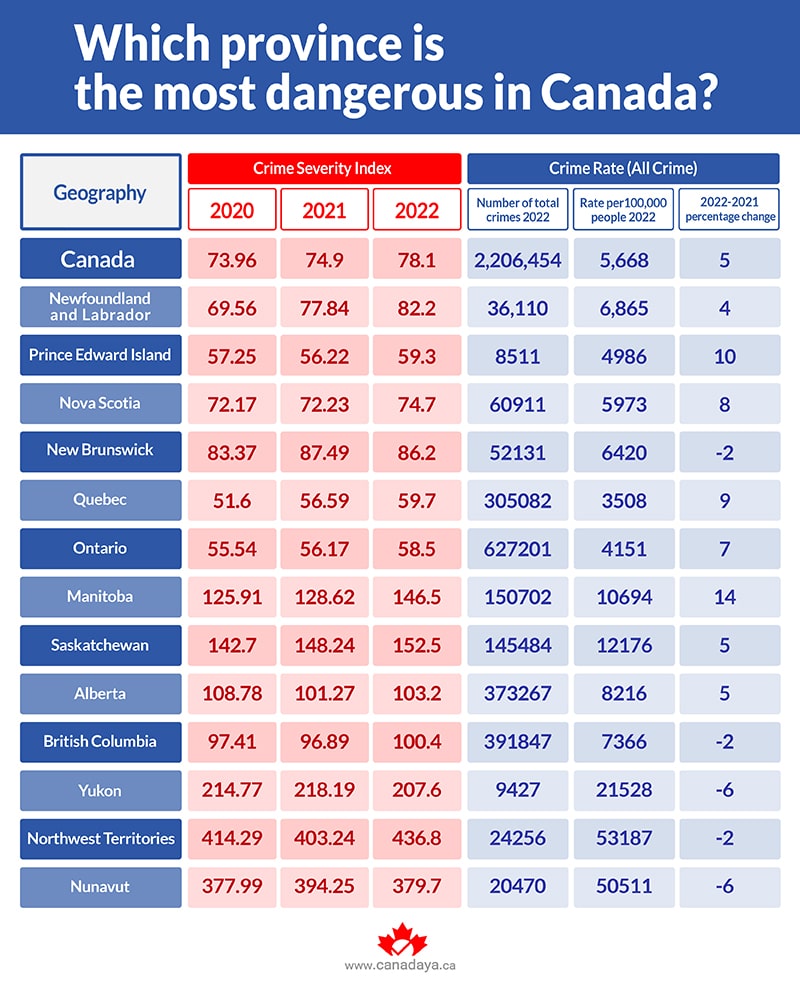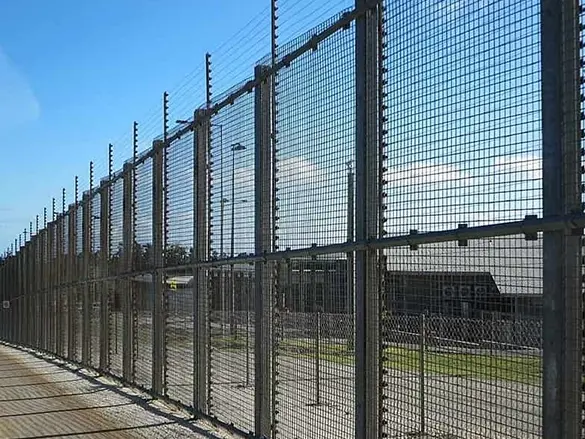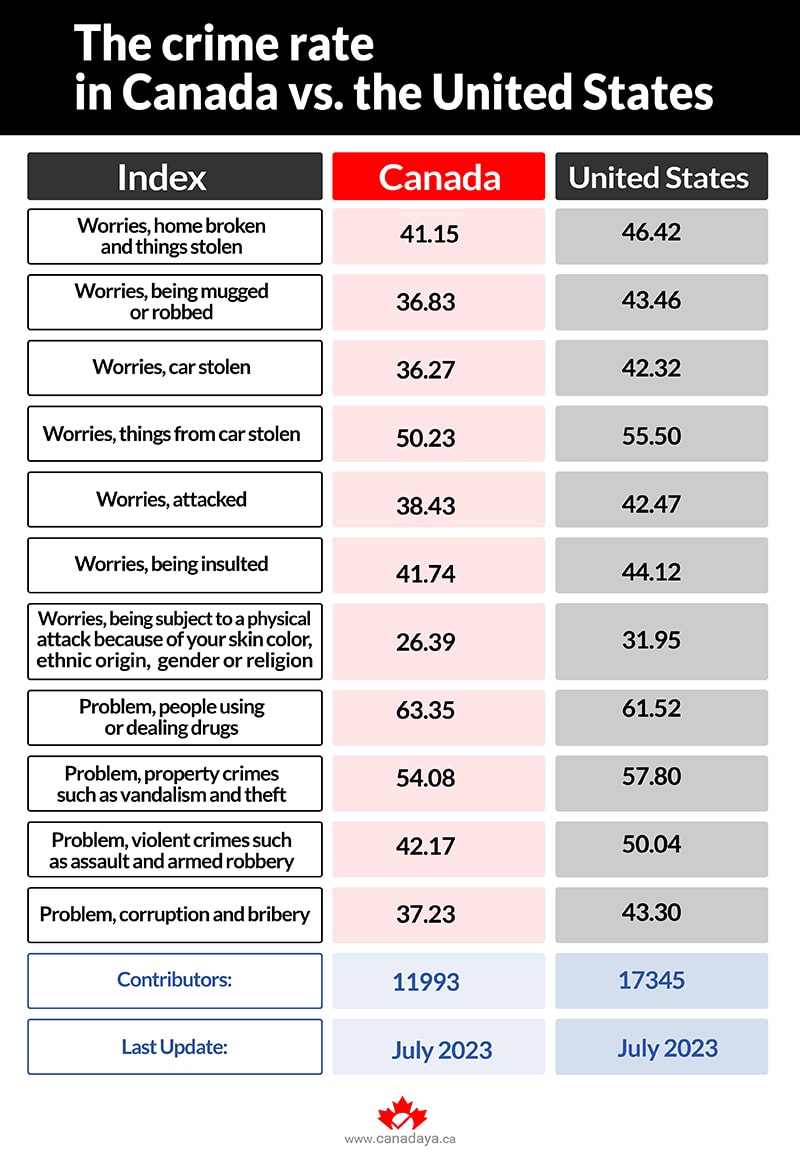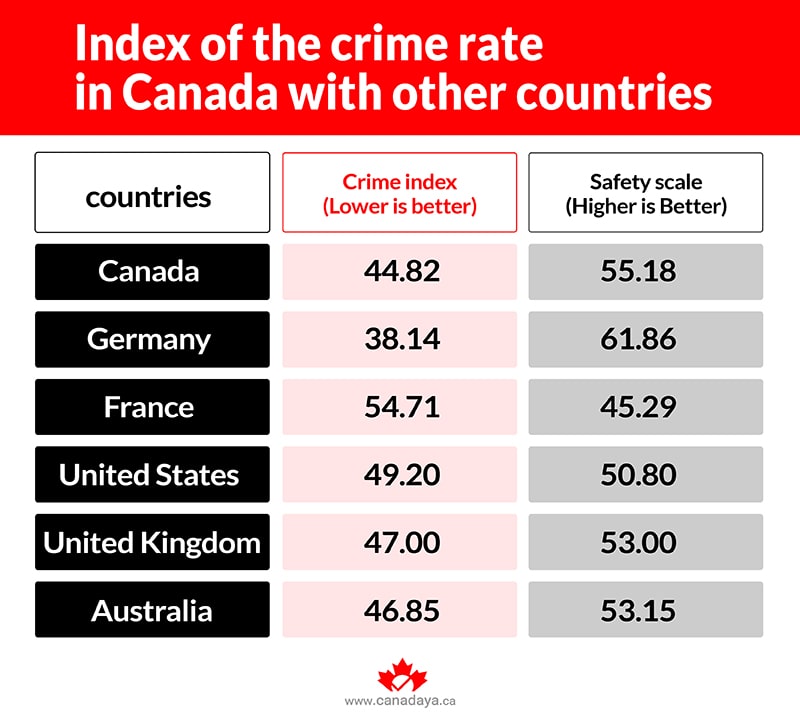
The Police-reported Crime Rate in Canada; Is Canada safe enough for living and visiting?

Canada has always been a safe country for living and visiting, as the crime rate in Canada suggests. Canada has barely registered police-reported crime based on the crime rate, and crime severity index (CSI) compared to its southern neighbors. based on the crime rate and CSI index in 2022, Canadians have experienced an impressive increase in crime rates since the end of the pandemic.
The present article aims to provide a complete picture of police-reported crime in Canada, and findings are mainly from the Canada’s Statistics and 2022 survey on police-reported crime across Canada.
Table of Contents
The violent police-reported crime rate in Canada in 2023
According to Statistics Canada, the annual crime rate surged about 5% from 2021 to 2022, with up to 6,194.56 incidents per 100,000 population. The researchers observed increase in violent crime in 2022, following a 6% rise in 2021, as measured by the Crime Severity Index (CSI).
Crime statistics by province and territory
Generally, the Prairie provinces (especially, Manitoba and Saskatchewan) have a higher violent crime rate compared the rest of the provinces. The following chart shows that Saskatchewan and Manitoba have the highest crime rate in Canada compared to the other provinces.
Based on the Crime Severity Index (CSI), police-reported crime in Canada increased 4.7 from 73.4 to 78.1 in 2020-2022. However, territories have the highest crime rate in many instances. The following table shows the 2022 crime statistics for provinces and territories per 100,000 people in 2022:

Crime rate in Canada stats by provinces and territories
In the table above, which shows the rate of crimes in different Canadian provinces, total violent criminal code violations, include cases such as homicide, murder, sexual assault, sexual violations against children, firearms and total robbery. Also, Total property crime violations, include cases such as total breaking and entering, fraud, arson, etc.
A detailed analysis of police-reported crime in Canada:
- In 2022, the crime rate in Canada experienced shifts as crime rates of theft, breaking and entering, and robbery increased after declining during the pandemic in 2020. Motor vehicle theft had the most significant impact on the overall Crime Severity Index (CSI) increase in 2022, followed by robbery, breaking and entering, minor theft, and shoplifting.
- The crime rate in Canada saw specific changes in 2022 as certain types of property crimes saw increases compared to the previous year but remained lower than the levels recorded in 2019. Shoplifting rose by 31%, minor theft by 10%, and breaking and entering by 4%. Motor vehicle theft also increased by 24% in 2022 and was 17% higher than in 2019.
- Among property crimes, breaking and entering, which was considered the most severe according to the Crime Severity Index (CSI), remained prevalent in the crime rate in Canada. In 2022, police reported nearly 133,000 breaking and entering incidents, accounting for 16% of the CSI, making it the most common violation.
- In 2022, the rate of robbery increased by 15%, marking the first rise in two years. However, the rate remained 10% lower than in 2019. Before the decline observed in 2020, national robbery rates had shown relative stability over the previous five years. Robbery, categorized as a violent violation, contributed to 39% of the increase in the Violent Crime Severity Index (CSI) in 2022.
- In 2022, increasing the crime rate in Canada, the rate of police-reported fraud, including general fraud, identity theft, and identity fraud, was significantly higher, showing a 78% increase compared to a decade earlier. Compared to 2021, fraud saw a 4% increase, with 459 incidents per 100,000 population in 2022. Except for two years of stability in 2020 and 2021, fraud has been steadily rising since 2011.
- The rate of police reported extortion increased for the third consecutive year in 2022 (+39% to 25 incidents per 100,000 population), following similar increases in 2020 and 2021. Overall, the rate of extortion was five times higher in 2022 than in 2012, rising from 5 to 25 incidents per 100,000 population.
- In 2022, the combined offenses of fraud and extortion accounted for 62% of cybercrimes, having their effect on the crime rate in Canada.
- The number of police-reported hate crimes rose by 7% from 3,355 incidents in 2021 to 3,576 incidents in 2022. This comes after a significant 72% increase from 2019 to 2021.
- Hate crimes targeting race/ethnicity and sexual orientation contributed to the majority of the increase (+12%; 1,950 incidents and +12%; 491 incidents, respectively). On the other hand, hate crimes targeting religion decreased by 15% in 2022 but remained higher than the previous three years. Ontario, Nova Scotia, and Saskatchewan played a significant role in the national increase among provinces and territories.
- In 2022, there were 874 homicides reported by police, an increase of 78 compared to the previous year. The crime rate in Canada for homicides rose by 8%, reaching 2.25 homicides per 100,000 population, the highest rate since 1992. The increase was mainly observed in British Columbia, Manitoba, and Quebec. Manitoba and Saskatchewan historically had the highest provincial homicide rates, with 6.24 and 5.94 homicides per 100,000 population, respectively.
- In 2022, the homicide rates in the Northwest Territories (6.58 homicides per 100,000 population), Yukon (4.57 per 100,000), and Nunavut (2.47 per 100,000) were higher than the national average. The territories’ relatively small population counts often lead to more variable annual rates.
- In 2022, police reported 225 Indigenous homicide victims, which was 32 more than in 2021. The homicide rate for Indigenous people was significantly higher at 10.98 homicides per 100,000 population, nearly seven times greater than the rate for the non-Indigenous population at 1.69 homicides per 100,000 population.
- Rate of violent Criminal Code firearm offences up for eighth consecutive year rising 4% in 2022 to 12.2 incidents per 100,000 population.
- In 2022, the rate of police-reported level 1 sexual assault increased by 3%, reaching 90 incidents per 100,000 population, with 1,574 more incidents than the previous year.
The crime rate in Canada vs. the United States
The following table contrast the level of police-reported crime in Canada and the United States based on the survey was performed in July 2023. 11993 and 17345 people respectively in Canada and the United States participated in this survey. The total results indicated that the crime rate in Canada is lower than the United States.
Safety Scale of Canada and Other Countries
The crime index used in this table for crime rates Canada is different from the crime severity index we used earlier. The crime severity index is only used for Canada in this article, but the crime index is for Canada in general and its comparison with other countries.
Which province is the most dangerous in Canada?
As seen in the table below, the province of Saskatchewan has the highest crime rate in Canada among the provinces with an index of 152.5, and this index has increased by 3% from 2021 to 2022. This province is known as the most dangerous province for the following reasons:
- High Crime Rate
- Rise in Crime
- High Number of Dangerous Cities
In 2022, the majority of provinces and territories witnessed growth in their CSI (Crime Severity Index), except for New Brunswick (-2%), Yukon (-5%), and Nunavut (-4%).
The province that experienced the most significant rise in CSI was Manitoba (+14%), where both violent and non-violent crimes contributed substantially to the overall increase. Following were Newfoundland and Labrador, Quebec, and Prince Edward Island, each with a 6% increase in their CSI.

Our last words on police-reported crime rate in Canada
As you read, according to the detailed information on criminal offenses changes, crime, in general, increased in Canada in 2022 based on the crime rate and CSI index. Of course, Canada has always been safe, and still is compared to many other countries around the globe.
Get in touch with us if you want to know more about statistics on police-reported crime. We are happy to help, and we look forward to seeing your comments. You can also read more about Canada’s politics, history, economy, and geography.
Updated: August 2023
- https://commons.wikimedia.org/wiki/File:Police_du_Qu%C3%A9bec,Manifestation
- https://oakvillenews.org/news/halton-remains-safest-canadian-city-2021/
- https://www.statista.com/statistics/526130/canada-rate-of-violent-crimes
- https://en.wikipedia.org/wiki/Crime_in_Canada
- https://nationalpardon.org/what-city-has-the-highest-crime-rate-in-canada/
- https://www150.statcan.gc.ca/n1/daily-quotidien/210727/dq210727a-eng.htm
- https://www.numbeo.com/crime/compare_countries_result.jsp?country1=Canada
- https://newcanadianlife.com/what-is-the-most-dangerous-province-in-canada/
- https://www150.statcan.gc.ca/n1/daily-quotidien/210727/dq210727a-eng.htm
- https://commons.wikimedia.org/wiki/File:Detention_Center_Fencing_(25087989584).jpg
- https://commons.wikimedia.org/wiki/File:Ontario_Police_Memorial_Park.jpg
- https://www150.statcan.gc.ca/n1/daily-quotidien/230727/t003b-eng.htm
- https://www.numbeo.com/crime/compare_countries_result.jsp?country1=Canada&country2=United+States
- https://www150.statcan.gc.ca/t1/tbl1/en/cv.action?pid=3510017701






